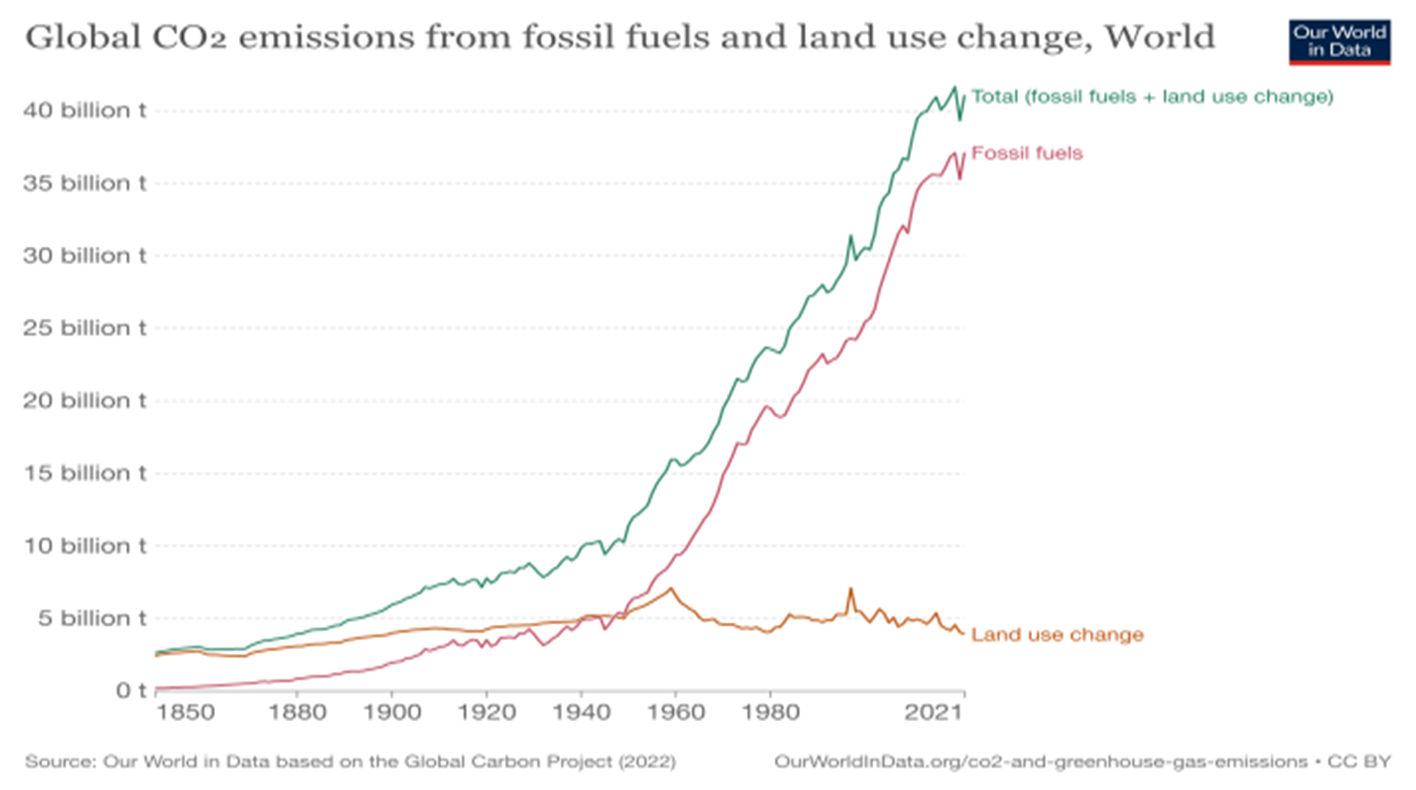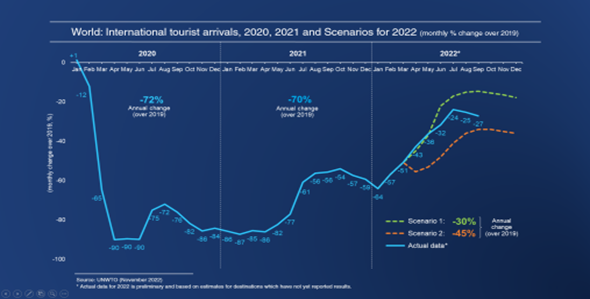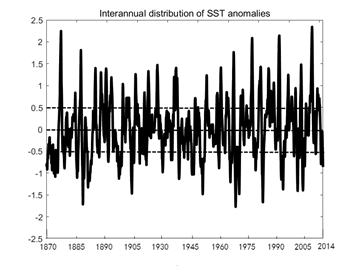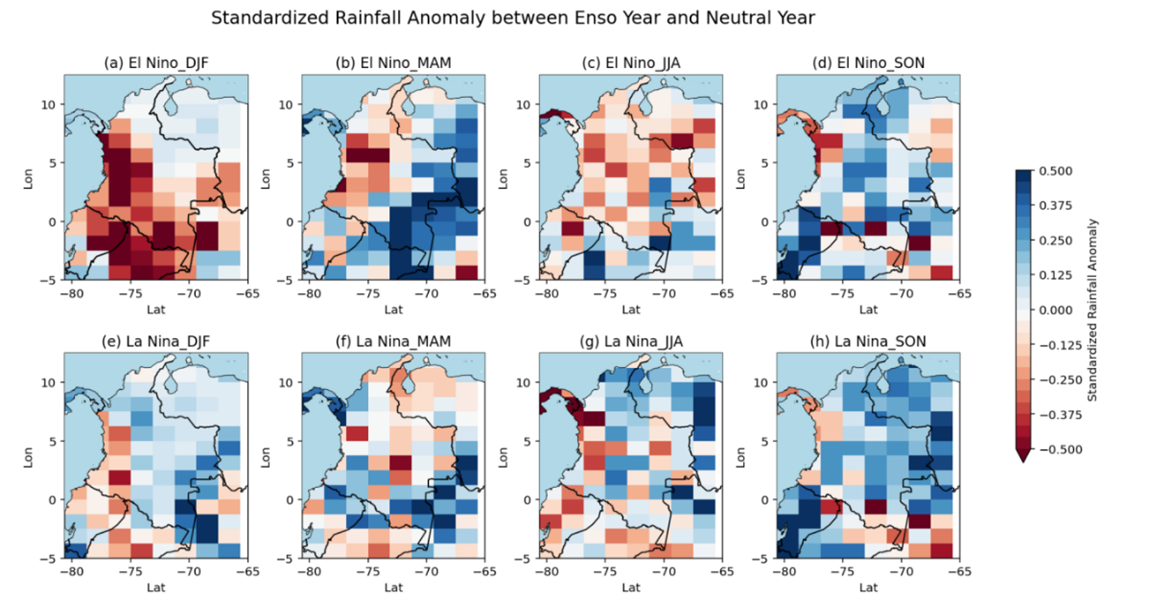

Volume 7
Published on October 2023Volume title: Proceedings of the 2023 International Conference on Environmental Geoscience and Earth Ecology

The Atlantic Meridional Overturning Circulation (AMOC) is a vital component of the global climate system, playing a crucial role in transporting heat and salinity from the equator to the North Atlantic, which in turn keeps Europe significantly warmer than other regions at the same latitude. Despite the fact that long-term observations and models have demonstrated an AMOC slowdown in response to global warming since the industrial revolution, detecting this slowdown in the brief observational record has proven to be challenging. In this study, the author investigates the relationship between short-term variability and the weakening AMOC by analyzing satellite remote sensing data of sea surface salinity collected over a decade. As a consequence of global warming, the weakened AMOC transports less heat and salt from the equator to sub-polar regions, causing heat and salt anomalies. This evidence further corroborates the slowing of the AMOC in response to human-caused warming and emphasizes the variability on a scale of half a decade caused by the deceleration.

 View pdf
View pdf


Chinese rose is one of the top ten most famous traditional flowers in China, as well as one of the world's four cut flowers and the most frequently used ornamental flower, known as the "queen of flowers." According to the records of the American Rose Association, in 2000 there were more than 24,000 varieties of Chinese roses worldwide. In China, the Chinese rose has a lengthy history of cultivation, a strong mass base, a positive moral symbol, and a robust group of varieties. In recent years, an increasing number of plant breeders have been devoted to the study of Chinese rose breeding, and Chinese rose breeding techniques have advanced by leaps and bounds and produced fruitful outcomes. This paper summarized the breeding objectives of contemporary Chinese rose, analyzed and discussed the breeding techniques of molecular breeding, introduction and screening, crossbreeding, bud sport breeding, mutation breeding, and so on, and anticipated the future research field of Chinese rose breeding.

 View pdf
View pdf



The paper reveals that the Hadley circulation (HC) is closely related to the dynamic situation of Greenhouse Gases (GHGs). Employing reviewing and summarizing the past essays of several researchers, it is concluded that the increasing amount of GHGs emitted into the atmosphere has led to the pole-ward expansion of the HC, though the extent of the widening of the HC is different in that the factors taken into account are variable. Apart from the observed expansion, studies have also focused on the possible relationship between the widening and the strength of the HC. The definite result of whether the expansion causes the strengthening or weakening of the HC remains unsolved, some predictions have already been made, which either unfold a picture of the weakened HC or a strengthened HC following the pole-ward expansion. While discussing the widening and intensity of the HC, some papers fail to consider factors other than stream and pressure, so the paper also includes some discussions about determinants such as Sea Surface Temperature (SST) anomalies. Lastly, the paper will point out how the change of the HC will alter the climate in parts of the world in terms of precipitation.

 View pdf
View pdf


Among the malignant diseases that pose a significant risk to children's health and wellbeing is leukemia. As the incidence, diagnosis rate, and mortality rate of leukemia continue to rise, researchers and academics have conducted in-depth investigations into the factors that contribute to the development of this disease in young people. Some of the causes of childhood leukemia can be traced back to the outside world. In this study, we will examine what has been learned so far about how external environmental pollution factors are linked to childhood leukemia.

 View pdf
View pdf


Invasive Alien Species (IAS) have been an increasing subject of concern with their growing speed of spread and increasing impacts on the invaded areas. The sustainability of IAS control, that is, how to make managing IAS most economical, human, and environmentally efficient is currently an issue under discussion. This review catalogs the general aspects of invasive species, from their natural spread to human-induced causes such as how it is spread through cross-sea and cross-border trades, affected by artificial constructions such as dams and reservoirs, agriculture, climate change, and deliberate introduction. The review also analyzed how IAS causes harm to the ecosystem and human community, what harm it causes, and how humans manage these invaders. Thus, providing a foundation for future research regarding the sustainability of the management of invasive alien species.

 View pdf
View pdf



This literature review investigates the extensive impact of the COVID-19 pandemic on various aspects of people's lives. Key themes identified include healthcare, economics, livelihood, and mental health during the pandemic. However, gaps and limitations in existing research on the pandemic's impact have been revealed. Notably, the majority of studies focused on the population directly affected by the pandemic, such as the negative impact on mental health during lock-downs, the strain on healthcare systems, and the global economic downturn. This knowledge gap is not unique to the current pandemic but has also been observed in similar studies on the Great Influenza Pandemic and its influence. This study differs from the existing literature in the following way. It would provide further research that examines mental health challenges and stressors faced by healthcare providers, local businesses, and the cascading effects experienced by these affected groups. By addressing the flaws in the global response to the pandemic, this review contributes to the field, facilitating learning from mistakes and enhancing future preparedness. In summary, this literature review highlights the multifaceted impacts of the COVID-19 pandemic on various aspects of people's lives, emphasizing the negative consequences experienced by affected groups. It emphasizes the necessity of addressing these impacts to ensure they are no longer neglected.

 View pdf
View pdf



ENSO, known as the dominant interannual variation in the climate system, consists of two components: La Niña and El Niño. Earlier research indicates that ENSO is contributed to by red noise, while other studies attribute it to deterministic oceanic dynamical processes. The Bjerknes feedback amplifies the sea surface temperature anomaly, forming a cycle of 2-7 years through delayed negative feedback. ENSO not only significantly impacts the climate of the eastern equatorial Pacific but also influences mid-to-high latitudes by affecting equatorial atmospheric circulation. Additionally, ENSO has important effects on the western Pacific coastal region. For example, sea surface temperature anomalies during ENSO affect East Asian monsoon activity in subsequent years, thereby impacting the Chinese monsoon. Moreover, ENSO influences winter synoptic-scale temperature variability in China by affecting synoptic-scale transient vortices over Siberia. Furthermore, we discuss the similarities and discrepancies in the influence of Central Pacific and Eastern Pacific ENSO events on East Asia.

 View pdf
View pdf



This paper reviews climatic anomalies in Colombia, and South America, primarily based on CMIP6 model with data from the World Bank Group and the Climatic Data Store API under the emission scenarios SSP1-2.6 and SSP5-8.5. Due to the processing of atmospheric dynamics, ENSO directly affects the northern part of South America and indirectly affects subtropical South America. El Nio years are distinguished by higher incidence of dry weather extremes, and during neutral or La Nia years are likelier to experience wet weather extremes. Overall, western part of Colombia is colder than the southeast since it incorporates a portion of the Andes Mountains. Each of the four seasons has rising temperatures ranging from 2.2 ℃ to 5.2 ℃, with the nation's southern, eastern, and northern regions suffering the highest increases. The west of Colombia experiences more rain throughout the year than the rest of the country, which has the highest precipitation in the spring and summer. Droughts and reduced water supply carried on by rising temperatures could damage infrastructure, damage the environment, loss of revenue, and severe societal effects when combined with flooding brought on by higher precipitation and rainfall anomalies.

 View pdf
View pdf


Accurate rainfall forecasts help in planning outdoor activities, agricultural practices, and water resource management, thereby mitigating the impact of extreme weather events. This article provides an in-depth analysis of rainfall in Australia, focusing on predicting whether it will rain tomorrow using logistic regression. The research aims to develop an accurate model to help predict rainfall events for better preparedness and planning. We obtained datasets from a number of Australian weather stations. The dataset contains 142,193 daily weather observations spanning approximately ten years. The recorded information includes various details such as date, location, humidity, wind direction, clouds, temperature, etc. This shows that the model performs well in distinguishing between rainy and non-rainy days with an accuracy of about 0.875. The findings of this study have important implications for various stakeholders including meteorologists, disaster management agencies, and the public.

 View pdf
View pdf


Light pollution is closely related to human life, not only affecting the human experience of viewing the landscape at night, but also affecting the natural light and dark pattern of the ecosystem, resulting in the destruction of the ecosystem, and even causing potential impacts across a range of spatial and temporal scales. In view of the above problems, this paper puts forward the research on the measurement of light pollution risk level and makes relevant intervention strategies to reduce the influence of light pollution. Firstly, the light pollution risk levels in different regions were compared by establishing a model to indirectly quantify the light pollution risk level (LPRM) and using satellite remote sensing images to calculate the luminous flux scale. Then, the index system model (LPRI) of light pollution risk level was established, and the entropy weight method was used to evaluate the weight of each index, and the intervention policy was formulated. All in all, the LPRM model in this paper can roughly measure the level of light pollution risk in a region, and the proposal of this research topic can provide a reference idea for the governments of various countries to issue laws in the future.

 View pdf
View pdf




